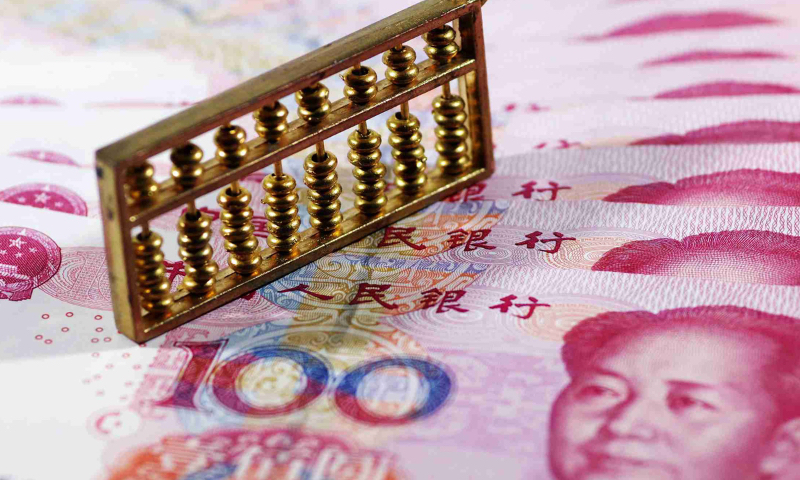
Photo: CFP
The Chinese yuan accounted for 2.88 percent of global foreign currency reserves in the second quarter of 2022, the latest report from IMF showed, ranking fifth worldwide and maintaining its highest global reading since data was first released in 2016.
Observers say that this mirrors a steady step in the yuan's internalization and global bullish views on the long-term development momentum of the Chinese economy.
The ratio could rise further in the future, as US Federal Reserve's multiple rounds of interest rate hikes since the beginning of this year have dampened investor confidence in the US dollar-dominated financial system, which could further boost the yuan's globalization.
Also, the yuan's proven relative stability - amid a steep depreciation of other major currencies, as well as the West's sweeping sanctions against Moscow amid the Ukraine crisis and conflict, will also speed up yuan's global use, making it a "safe haven" asset that draws more investors, Chinese analysts said.
According to recently-released IMF data, the yuan's share of global foreign exchange reserves stood at 2.88 percent in the second quarter, the same as in the first quarter, ranking the fifth in the world. The dollar is still the largest currency across central banks' foreign exchange reserves, followed by the euro, the yen and the British pound.
The 2.88-percent global share represents an increase of 1.8 percentage point in yuan's shares in global foreign exchange reserves on October 1, 2016, when the Chinese currency was added to the IMF' special drawing rights (SDR) basket as the fifth currency. It also compared with the 2.68 percent and 2.8 percent global share recorded in the third quarter and fourth quarter in 2021.
In a major display of the growing global recognition of the yuan, the IMF has further raised the weighting of the Chinese currency in the basket of currencies that make up the SER by 1.36 percentage points to 12.28 percent in August.
The yuan's steady pace of internalization is also reflected through its increased use in global trade and settlements.
According to data from global payment services the Society for Worldwide Interbank Financial Telecommunication (SWIFT), the Chinese yuan has retained its position as the fifth most active currency for global payments by value in August, accounting for a 2.31 percent share.
In August, the overall amount of payment made with yuan jumped 9.25 percent month-on-month, SWIFT data showed.
The yuan's global rise comes as credibility and reputation of the US dollar system is at a higher risk of collapsing due to Washington's reckless and irresponsible monetary policy which has pushed the world to the brink of a economic recession.
"European and US financial markets are gradually reaching a shared view on decline of the US dollar system, while more become to recognize the yuan's internationalization trend over the long run," Chen Jia, a research fellow with the International Monetary Institute of the Renmin University of China, told the Global Times.
From an investment perspective, the yuan-denominated assets are increasingly attractive to foreign investors and institutions, including bonds, equities and other assets, said Ming Ming, chief economist at Citic Securities.
Also, the yuan-denominated assets are gaining favor in markets such as Russia. It is reported that the
market trading volume of Chinese yuan and Russian ruble would exceed the trading of the ruble and the US dollar in 2023 in Russia.
Some analysts said the hardening economic sanctions imposed by the West on Moscow also exposed the risks of over-reliance on the US dollar and the euro, which will further provide impetus for other countries to seek alternative payment options, such as the yuan.
The yuan's expansion in both foreign exchange reserves and global payments will provide support to stabilizing the currency's exchange rate amid a spate of global economic and geopolitical uncertainties.
Global Times




